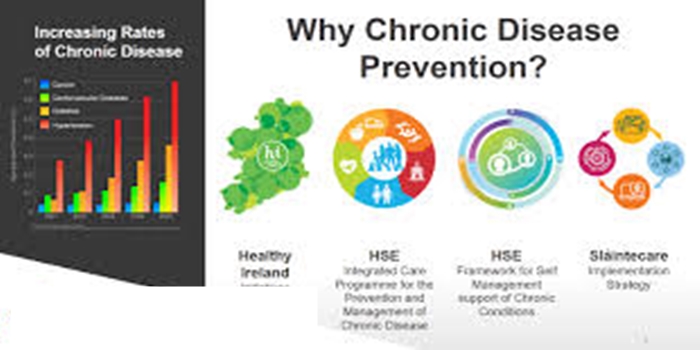In this article, we discussed the meaning of chronic disease, the causes, the stages, types, we also talked about the prevention and treatment.
Definition
A chronic disease is a condition that lasts for at least three months and can worsen over time. Chronic diseases are also known as noncommunicable diseases (NCDs) and are not contagious.
Chronic diseases are a major cause of death and disability, and they are a leading driver of health care costs. They can have a significant impact on quality of life, and many people have more than one chronic condition at the same time
Chronic diseases are caused by a combination of genetic, physiological, environmental, and behavioral factors. Some common risk factors include:
Lifestyle factors: Unhealthy diet, physical inactivity, tobacco use, excessive alcohol use, and exposure to secondhand smoke
Biological factors: High blood pressure, high blood cholesterol, being overweight or obese, and high blood sugar
Social factors: Socioeconomic status, education level, and race/ethnicity
Some types of chronic diseases include:
Cardiovascular disease, such as heart attacks and stroke
Cancers, such as breast and colon cancer
Chronic respiratory diseases, such as chronic obstructive pulmonary disease and asthma
Diabetes
Arthritis
Epilepsy and seizures
Obesity
Oral health problems
Chronic diseases can be categorized in different stages, and it includes:
Disease course
Chronic diseases can be progressive, constant, or episodic:
Progressive: Symptoms worsen and daily functioning decreases. For example, end stage renal disease and cystic fibrosis are progressive chronic diseases.
Constant: The medical trajectory remains stable after the initial incident. For example, cerebral palsy, spinal cord injury, and PKU are constant chronic diseases.
Episodic: Alternates between asymptomatic periods and exacerbations. For example, epilepsy and sickle cell disease are episodic chronic diseases.
Treatment phases
Chronic illness treatment can be broken down into four phases: crisis, stabilization, resolution, and integration. People may move between phases and may be in more than one phase at once.
Psychological stages
People with chronic pain may experience a number of psychological stages, including denial, anger, anxiety, depression, and acceptance.
Kidney disease stages
The National Kidney Foundation (NKF) divides kidney disease into five stages based on glomerular filtration rate (GFR):
Stage 1: GFR is normal or high
Stage 2: Mild CKD
Stage 3A: Moderate CKD
Stage 3B: Moderate CKD
Stage 4: Severe CKD
Stage 5: End Stage CKD
Chronic disease prevention and treatment can include:
Nutrition: A plant-based diet may help prevent chronic diseases like type 2 diabetes and cardiovascular disease (CVD). Nutrition counseling can help reduce patient suffering and healthcare costs.
Physical activity: Physical activity is a key component of treating chronic disease.
Sleep: Getting enough high-quality sleep can help reduce inflammation.
Primary health care: A primary health care approach can help with early detection and timely treatment.
Palliative care: Providing access to palliative care can help people in need.
Healthy habits: Practicing healthy habits like washing hands, handling food safely, and getting vaccinated can help prevent the spread of contagious diseases.
Primary prevention refers to actions that aim to avoid the development of a disease. These actions can include:
Improving health through changing the impact of social and economic determinants on health
Providing information on behavioral and medical health risks.
Conclusion
Chronic diseases are a major cause of death and disability, and they are a leading driver of health care costs. They can have a significant impact on quality of life, and many people have more than one chronic condition at the same time. Many are preventable and are caused by a combination of risk factors, including: smoking, poor nutrition, physical inactivity, and excessive alcohol use.

